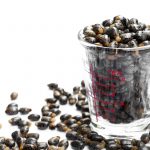Ovarian Factor Infertility: Workup & Natural Medicine Approach
Corina Dunlap, ND, MS
Tolle Causam
One of the hardest and most important aspects of supporting individuals and couples with infertility is correct identification and diagnosis of all potential causes (“factors”). Most infertility factors fall into the categories of male, female, combined, or unexplained.1 Male factors include, but are not limited to, abnormal semen parameters (such as low sperm count, abnormal morphology, or low motility) hypogonadism, post-testicular defects, and seminiferous tubule dysfunction.2 Female factors include ovarian, tubal, uterine, cervical, and endometriosis. Combined factors may include coital difficulties or a combination of male and female factors. Unexplained, or unknown, factor is a diagnosis of exclusion.
Ovarian factor infertility is the most common female factor, and one of the most complicated to work up.1 Ovulatory disorders account for about one-quarter of all female infertility types, and are closer to one-third when hyperprolactinemia is included. Ovarian factor can be divided into 2 distinct categories: ovulatory dysfunction and diminished ovarian reserve.3 Ovulatory dysfunction refers to any condition or process interfering with follicle development and/or ovulation. Diminished ovarian reserve (DOR) refers to diminished egg quality and count (Table 1), and includes advanced maternal age (defined as ≥35 years old) – a naturally occurring ovarian decline.4
Table 1. Ovarian Infertility Factor3
| Categories | Common Etiology Subtypes* |
| Ovulatory dysfunction | Functional hypothalamic amenorrhea (FHA), polycystic ovary syndrome (PCOS), hyperprolactinemia, thyroid disorders, and ovarian cysts |
| Diminished ovarian reserve | Congenital, medical, surgical or advanced age |
*For a more complete list, see UpToDate, Causes of Female Infertility.4
Workup for Ovarian Factor Infertility
Determining presence of ovulatory dysfunction and/or diminished ovarian reserve begins with a complete history and physical exam.5 Clues from the history may include irregular menses (too frequent or too few), premenstrual or mid-cycle bleeding, and/or abnormally light or heavy menses. The patient may have further complaints of fatigue, hair loss, and/or signs of hirsutism, galactorrhea, or obesity. In the case of diminished ovarian reserve, an abnormal menstrual history may or may not be accompanied by a constellation of menopausal symptoms (ie, hot flashes, night sweats, disrupted sleep, mood changes, vulvovaginal changes, and/or decreased libido). The history and physical exam will guide lab workup.
Ovarian dysfunction is determined by the presence or absence of ovulation; assessment thus begins by gathering clues about menstrual history.5 Regular and predictable menses (every 25-35 days) likely reflect ovulation. However, this is not an absolute determinant; in polycystic ovary syndrome (PCOS), for example, 10-15% of hyperandrogenic women with normal cycle length are anovulatory.6 Therefore, it is important to consider ovulation workup as part of a general infertility screen (See Table 2).
Table 2. Ovarian Factor Workup
| Ovulatory Dysfunction | -Determining Ovulation
· Menstrual cycle · Luteal-phase progesterone (Day 18-24 of cycle) · Ovulation predictor kits · Basal body temperature (BBT) · Cervical mucus · Transvaginal ultrasound -Thyroid panel -Prolactin -Free & Total Testosterone; DHEAS; 17-OH Progesterone; Fasting Insulin |
| Ovarian Reserve | – Follicle-Stimulating Hormone (FSH); Estradiol (Day 2-4 of cycle) with or without Clomiphene Citrate Challenge Test (CCCT)
-Antral Follicle Count (AFC) -Serum Anti-Müllerian Hormone (AMH) |
Ovulatory Dysfunction
Testing for ovarian factor is not a perfect science, as no single test is a perfect predictor. Testing for ovarian dysfunction can begin with a serum luteal-phase progesterone reading; however, this is sometimes challenging to interpret, especially in the case of irregular cycles. Testing on days 18-24 of the cycle (day 1 = beginning of menses) is recommended.7 Determining the optimal reference range and when to be concerned is also challenging. Progesterone is secreted in a pulsatile manner, and may fluctuate up to 8-fold within 90 minutes. A low result (eg, 2 ng/mL or less) is inconclusive, as this value may have been captured in a dip. A single reading of 2.5-6 ng/mL may indicate ovulation, but a higher value (10 ng/mL or greater) provides a more comfortable determination of this. An average reading from 3 consecutive days, or 3 cycles, can be more helpful, but is often inconvenient for patients.
Ovulation predictor kits (OPKs) are a convenient at-home way for women to determine ovulation timing by measuring luteinizing hormone (LH) levels in urine. Once LH exceeds a certain threshold, the test indicates as “positive” for ovulation. OPKs are typically positive 24 hours before the oocyte is released.7 They have a 7% false-positive rate; therefore, serum confirmation may provide further insight, especially if the patient is preparing for intrauterine insemination (IUI) or in-vitro fertilization (IVF).8
Cervical mucus and basal body temperature (BBT) monitoring can be a nice way for women to connect with their bodies and gain more clues about ovulation timing. Progesterone influences increased production of norepinephrine, which is thermogenic.9 Ovulation, therefore, is likely with a sustained 0.5 °F rise in luteal-phase BBT.7 Cervical mucus changes occur pre-ovulation and can be self-monitored; ovulatory mucus is more slippery, stretchy, and clear, similar to egg white consistency.
Transvaginal ultrasound can also help demonstrate signs of ovulation by revealing free fluid and/or a collapsed follicle, although it is not commonly practiced in ovarian factor workup unless the woman is preparing for IUI or IVF. All other ovarian dysfunction testing (as listed in Table 2) can be helpful, especially if indicated by history.
Ovarian Reserve
When testing for ovarian reserve, the most commonly used tests are early follicular-phase follicle-stimulating hormone (FSH) combined with estradiol (generally tested on day 3 of cycle), anti-Müllerian hormone (AMH), and antral follicle count (AFC).7 As ovarian reserve declines, follicular phase will shorten and FSH will rise. It is important to concomitantly measure estradiol, as higher levels can suppress FSH to appear within normal range. FSH levels correlate with ovulation induction success and pregnancy rates. Generally, IVF is not recommended when FSH levels are >20 mIU/mL or serum estradiol concentrations are >100 pg/mL (367 pmol/L).10,11 It is important to repeat FSH levels, however, as values can be variable cycle to cycle. Clomiphene citrate challenge test (CCCT) is the administration of clomid (100 mg) from day 5 through 9, with the measurement of day 3 FSH and estradiol levels and day 10 FSH level.12 It can be used to further evaluate ovarian reserve, but isn’t necessarily more helpful than day 3 FSH and estradiol alone.
AMH is a hormone released by preantral and early antral follicles.12 Some confuse this test as a predictor of oocyte quality, when it is more accurately a test of oocyte count. Measurable AMH levels are absent in menopause. This test, in combination with antral follicle count by ultrasound, can be used as a predictor of IVF response. “AMH of >1.0 ng/mL, but <3.5 ng/mL suggests a good response to stimulation,” whereas “AMH <0.5 ng/mL predicts reduced ovarian reserve with <3 follicles in an IVF cycle.”12
A Natural Medicine Approach
When it comes to natural medicine approaches to female infertility, much of the research published each year is focused on lifestyle, nutraceutical, and botanical approaches for ovarian factor. The most common study design used within this population is a randomized controlled trial (RCT) examining a 3-month natural medicine intervention prior to assisted reproductive therapies (ART), either used in conjunction with ongoing intervention or alone. Most common outcomes measured are endocrine biochemical markers, egg or embryo grading, pregnancy, and live-birth outcomes, the latter generally being of greatest impact and interest.
For the purpose of this article, I would like to highlight several of the most recently researched natural medicine treatments for different ovarian factor etiological subtypes (see Table 3). While not the emphasis of this article, it is important to not forget general fertility optimization and preconception care in your patients. The naturopathic principle “Treat the Whole Person,” for all of our physical, emotional, and spiritual dimensions, cannot be underestimated in the preconception and fertility care plan. Furthermore, we cannot underestimate the importance of individualized care, with the added complexity that infertility is generally care for 2 individuals, and their joint optimization on pregnancy outcomes.
Table 3. Top Evidence-Based Natural Medicine Treatments for Ovarian Factor Etiology Subtypes
| Population | Intervention | Outcomes |
| Polycystic ovary syndrome (PCOS) | Myo-inositol: 4 g/d
In obese population, Myo-inositol in combination with D-chiro-inositol (40:1 ratio) |
Reduced cancellation rates13
Increased frequency of ovulation14
Lowered lipids, insulin and androgen levels; increased insulin sensitivity; reduced diastolic BP15 |
| N-Acetyl-cysteine: 1.2 g/d with clomid | Increased ovulation and pregnancy rates16 | |
| Diminished ovarian reserve (DOR) / Premature ovarian insufficiency (POI) | Melatonin: 3 mg/d | Improved measures of oocyte quality and count17 |
| Coenzyme Q10: 600 mg/d | Increased antral follicle count when compared to DHEA18 | |
| Luteal phase defect | Vitamin C: 750 mg/d | Increased luteal-phase progesterone19 |
| Black cohosh (Cimicifuga racemosa): 120 mg/d (days 1-12) | Increased luteal-phase progesterone20
Increased clinical pregnancy rate21 |
|
| Hyperprolactinemia | Chasteberry (Vitex agnus-castus): 20-40 mg/d | Lowered prolactin22
Increased luteal-phase progesterone23
Increased pregnancy rate24 |
Polycystic Ovary Syndrome
PCOS is probably the most researched ovarian factor type for natural medicine treatment options for fertility. Myo-inositol (MI) and D-chiro-inositol (DCI), 2 of 9 isomers of inositol, have both been studied for their impact on insulin-resistant-type PCOS patients. Myo-inositol, at a dose of 4 g/day (as a standard dose), appears to decrease cancellation rates prior to IVF, increase ovulation rates, and have other cardiometabolic and endocrine benefits (see Table 3).13-15 In an obese population, MI and DCI in combination, at a 40:1 ratio, provided better ovarian support than DCI alone.25 “The DCI Paradox” is a phrase used to describe the worsening oocyte quality and responsiveness when DCI is used at higher dosages and alone (rather than in conjunction with myo-inositol), and in non-obese and non-insulin-resistant PCOS.26 N-acetyl-cysteine (NAC), at 1.2 g/day and used with clomid in a clomid-resistant population, increased ovulation and pregnancy rates according to one study.16 While there are few studies on the specific use of NAC for ovarian factor fertility, it has been studied in women with PCOS for other purposes, and even compared to metformin, with promising anti-androgenic, insulin-normalizing, and cycle-regulating results.27
Diminished Ovarian Reserve
Diminished ovarian reserve (DOR) and premature ovarian insufficiency (POI) is a challenging category of age-related ovarian factor infertility. As women (especially those with a career and more education) are waiting to have babies at an older age, increased infertility and pregnancy complications can occur. The main goal of natural medicine care is to do everything we can to increase egg quality and count (as can be retrieved during IVF cycles). Melatonin (3 mg/day) and Coenzyme Q10 (600 mg/day) have both been shown to be effective.17-18 DHEA is absent in Table 3 because there is a great deal of research, with mixed results and reviews, which show no effect once bias and sensitivity are considered in analysis.28-29
Luteal Phase Defect
Luteal phase defect generally refers to disordered progesterone production and/or action. Luteal phase progesterone production, in addition to pregnancy and live birth rates, is the outcome of interest. Vitamin C, at a dose of 750 mg/day, and Cimicifuga racemosa (black cohosh), at a dose of 120 mg/day (on days 1-12), are both significantly associated with increased levels of luteal progesterone production, and black cohosh is also associated with increasing pregnancy rates.19-21
Hyperprolactinemia
Mild hyperprolactinemia can be one of the causes of luteal phase defect and/or a shortened cycle with low progesterone. Vitex agnus-castus (chasteberry) is a popular natural medicine fertility treatment, as well as a women’s hormone-balancing agent. The most impressive research regarding its use is its ability to lower prolactin due to dopaminergic effects, which then influence ovulation and pregnancy rates.22-24
Closing Comments
It can be daunting to consider all variables required for a pregnancy to progress to live birth. It is critical to work up all potential factors simultaneously for successful and efficient infertility treatments, as multiple factors may be contributing to an individual and/or couple’s ability to conceive.30 When it comes to natural medicine treatments, discuss reasonable timelines based on patient goals. Consider length of time a couple has been trying, as well as ovarian age, before recommending the next therapeutic level of intervention. Lastly, but not least in importance, include general and individualized preconception care in conjunction with a more specific infertility plan.
References:
- [No authors listed] Recent advances in medically assisted conception. Report of a WHO Scientific Group. World Health Organ Tech Rep Ser. 1992;820:1-111.
- Hull MG, Glazener CM, Kelly NJ, et al. Population study of causes, treatment, and outcome of infertility. Br Med J (Clin Res Ed). 1985;291(6510):1693-1697.
- 2010 Assisted Reproductive Technology: National Summary Report. December 2012. Centers for Disease Control and Prevention. Available at: https://www.cdc.gov/art/ART2010/PDFs/ART_2010_National_Summary_Report.pdf. Accessed October 10, 2017.
- Kuohung W, Hornstein MD. Causes of Female Infertility. Last updated September 27, 2017. UpToDate Web site. https://www-uptodate-com.nunm.idm.oclc.org/contents/causes-of-female-infertility?source=see_link#H18439130. [Membership required] Accessed October 10, 2017.
- Lindsay TJ, Vitrikas KR. Evaluation and treatment of infertility. Am Fam Physician. 2015;91(5):308-314.
- Barbieri RL, Ehrmann DA. Clinical manifestations of polycystic ovary syndrome in adults. Last updated March 7, 2017. UpToDate Web site. https://tinyurl.com/y999j889. [Membership required] Accessed October 11, 2017.
- Welt CK. Evaluation of the menstrual cycle and timing of ovulation. UpToDate Web site. https://tinyurl.com/yb7sohgw. [Membership required] Accessed October 11, 2017.
- McGovern PG, Myers ER, Silva S, et al. Absence of secretory endometrium after false-positive home urine luteinizing hormone testing. Fertil Steril. 2004;82(5):1273-1277.
- Zuspan FP, Rao P. Thermogenic alterations in the woman: I. Interaction of amines, ovulation, and basal body temperature. Am J Obstet Gynecol. 1974;118(5):671-678.
- Licciardi FL, Liu HC, Rosenwaks Z. Day 3 estradiol serum concentrations as prognosticators of ovarian stimulation response and pregnancy outcome in patients undergoing in vitro fertilization. Fertil Steril. 1995;64(5):991-994.
- Paulson R. In vitro fertilization. Last updated November 9, 2017. UpToDate Web site. https://tinyurl.com/ybxyvgko. [Membership required] Accessed October 10, 2017.
- Kuohung W, Hornstein MD. Evaluation of female infertility. Last updated September 27, 2017. UpToDate Website. https://tinyurl.com/ybt429lr. [Membership required] Accessed October 11, 2017.
- Morgante G, Orvieto R, Di Sabatino A, et al. The role of inositol supplementation in patients with polycystic ovary syndrome, with insulin resistance, undergoing the low-dose gonadotropin ovulation induction regimen. Fertil Steril. 2011;95(8):2642-2644.
- Gerli S, Mignosa M, Di Renzo GC. Effects of inositol on ovarian function and metabolic factors in women with PCOS: a randomized double blind placebo controlled trial. Eur Rev Med Pharmacol Sci. 2003;7(6):151-159.
- Minozzi M, Costantino D, Guaraldi C, Unfer V. The effect of a combination therapy with myo-inositol and a combined oral contraceptive pill versus a combined oral contraceptive pill alone on metabolic, endocrine, and clinical parameters in polycystic ovary syndrome. Gynecol Endocrinol. 2011;27(11):920-924.
- Rizk AY, Bedaiwy MA, Al-Inany HG. N-acetyl-cysteine is a novel adjuvant to clomiphene citrate in clomiphene citrate-resistant patients with polycystic ovary syndrome. Fertil Steril. 2005;83(2):367-370.
- Eryilmaz OG, Devran A, Sarikaya E, et al. Melatonin improves the oocyte and the embryo in IVF patients with sleep disturbances, but does not improve the sleeping problems. J Assist Reprod Genet. 2011;28(9):815-820.
- Gat I, Blanco Mejia S, Balakier H, et al. The use of coenzyme Q10 and DHEA during IUI and IVF cycles in patients with decreased ovarian reserve. Gynecol Endocrinol. 2016;32(7):534-537.
- Henmi H, Endo T, Kitajima Y, et al. Effects of ascorbic acid supplementation on serum progesterone levels in patients with a luteal phase defect. Fertil Steril. 2003;80(2):459-461.
- Kamel HH. Role of phyto-oestrogens in ovulation induction in women with polycystic ovarian syndrome. Eur J Obstet Gynecol Reprod Biol. 2013;168(1):60-63.
- Shahin AY, Ismail AM, Zahran KM, Makhlouf AM. Adding phytoestrogens to clomiphene induction in unexplained infertility patients – a randomized trial. Reprod Biomed Online. 2008;16(4):580-588.
- Milewicz, A, Gejdel, E, Sworen, H, et al. Vitex agnus castus extract in the treatment of luteal phase defects due to latent hyperprolactinemia. Results of a randomized placebo-controlled double-blind study. Arzneimittel-Forschung. 1993;43(7):752-756.
- Ibrahim N, Shalaby AS, Farag RS, et al. Gynecological efficacy and chemical investigation of Vitex agnus-castus L. fruits growing in Egypt. Nat Prod Res. 2008;22(6):537-546.
- Gerhard I, Patek A, Monga B, et al. Mastodynon® for Female Infertility. Forsch Komplementarmed. 1998;5(6):272-278.
- Dinicola, S, Chiu, TT, Unfer, V, et al. The rationale of the myo-inositol and D-chiro-inositol combined treatment for polycystic ovary syndrome. J Clin Pharmacol. 2014;54(10):1079-1092.
- Isabella R, Raffone E. Does ovary need D-chiro-inositol? J Ovarian Res. 2012;5(1):14.
- Javanmanesh F, Kashanian M, Rahimi M, Sheikhansari N. A comparison between the effects of metformin and N-acetyl cysteine (NAC) on some metabolic and endocrine characteristics of women with polycystic ovary syndrome. Gynecol Endocrinol. 2016;32(4):285-289.
- Nagels HE, Rishworth JR, Siristatidis CS, Kroon B. Androgens (dehydroepiandrosterone or testosterone) for women undergoing assisted reproduction. Cochrane Database Syst Rev. 2015;(11):CD009749.
- Triantafyllidou O, Sigalos G, Vlahos N. Dehydroepiandrosterone (DHEA) supplementation and IVF outcome in poor responders. Hum Fertil (Camb). 2017;20(2):80-87.
- Practice Committee of the American Society for Reproductive Medicine. Diagnostic evaluation of the infertile female: a committee opinion. Fertil Steril. 2012;98(2):302-307.
 Corina Dunlap, ND, MS, graduated with a Doctor of Naturopathic Medicine and a Master of Science in Integrative Medicine Research from the National University of Natural Medicine (NUNM). Dr Dunlap sees patients privately at A Woman’s Time and is also research and adjunct faculty at the School of Research & Graduate Studies at Helfgott Research Institute and NUNM. She teaches courses such as: Gynecology & Infertility; Women’s Health Research: Fertility and Beyond; Medical Anthropology; and Women’s Health Journal Club. Before NUNM, she received her BA from Smith College, with an emphasis in Medical Anthropology and International Relations.
Corina Dunlap, ND, MS, graduated with a Doctor of Naturopathic Medicine and a Master of Science in Integrative Medicine Research from the National University of Natural Medicine (NUNM). Dr Dunlap sees patients privately at A Woman’s Time and is also research and adjunct faculty at the School of Research & Graduate Studies at Helfgott Research Institute and NUNM. She teaches courses such as: Gynecology & Infertility; Women’s Health Research: Fertility and Beyond; Medical Anthropology; and Women’s Health Journal Club. Before NUNM, she received her BA from Smith College, with an emphasis in Medical Anthropology and International Relations.










